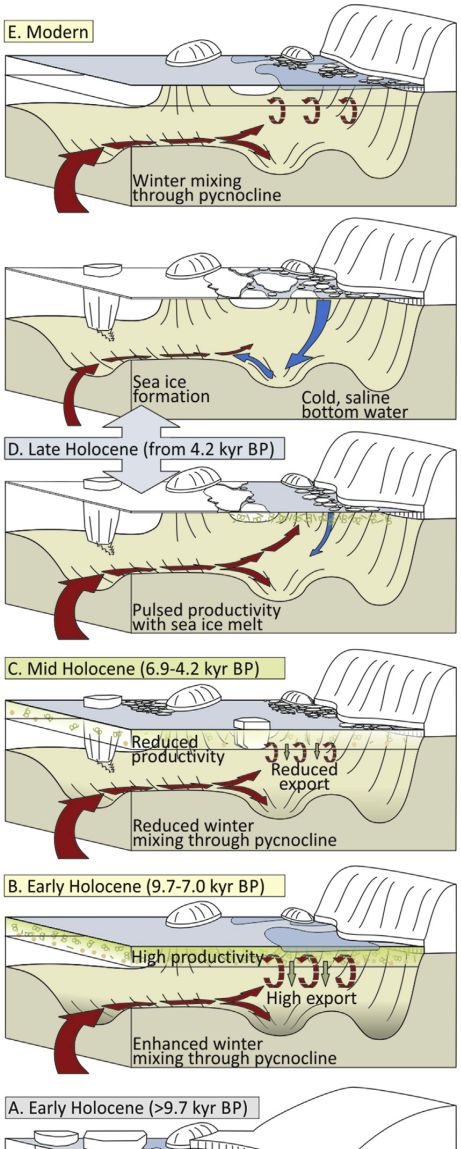Impact of Southern Westerly Winds and Circumpolar Deep Water on climate and marine ecology
The impact of Southern Westerly Winds and Circumpolar Deep Water on the climate and marine ecology of the West Antarctic Peninsula (WAP)
- Start date
- 1 July, 2015
- End date
- 1 July, 2015
The Antarctic Peninsula has warmed ~3°C over the last 50 years, approximately 6 times faster than the global average. Mechanisms for this accelerated rate of warming have been linked with a poleward shift of the southern westerly winds bringing warmer air masses into the northern peninsula and driving incursions of relatively warm and nutrient rich Circumpolar Deep Water (CDW) onto the continental shelf. These changes in oceanic and atmospheric circulation have led to declining sea-ice cover, warming sea surface temperatures and a southward migration of ecosystems along the WAP. Additionally, where CDW comes into contact with ice shelves and tidewater glaciers it causes accelerated basal melt and grounding line retreat.
Marine sediment cores show that CDW has been an important component of the WAP shelf waters at various intervals over the last 10,000 years (Holocene). Evidence from deglacial sequences show that CDW likely played an important role in the retreat of grounded ice from the Peninsula shelf and may have been an instrumental factor in the Early Holocene collapse of George VI Ice shelf. Microfossil and isotopic evidence also shows that continuous/persistent upwelling of CDW in Marguerite Bay also prompted reduced sea-ice cover, warmer sea surface temperatures and increased productivity during the early Holocene.
Dominic Hodgson
Interim Director of Science
BAS Science Strategy Executive Group, BAS Management team, Palaeo Environments, Ice Sheets and Climate Change team
